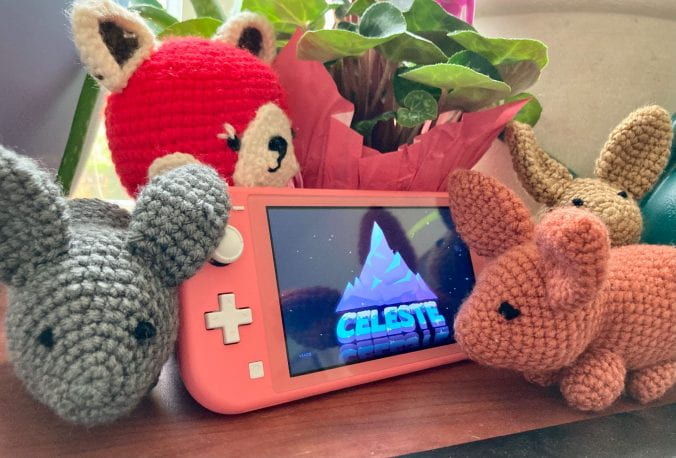Back when times were simpler, I used to plop down on the couch with my Nintendo DS and my troubles would melt away as I became completely absorbed in catching Pokémon or destroying zombies with my botanic army. I had a tiny world in the palm of my hands, filled to the brim with memorable characters, dazzling worlds, and soundtracks that pull on my heartstrings to this day. Some time last year, I decided to buy a Nintendo Switch Lite for myself in an effort to replicate the simple joy I had as a child while playing DS games. I had acquired my Switch Lite at a time where I was at the end of my rope trying to survive a global pandemic and go through college online. Social media was no longer cutting it as an escape route; too often it bombarded me with the endless deluge of tragedy occurring every day, tiring me further when I needed rest. So, I decided to take a cue from my childhood, and once again plop down on the couch with a cozy video game rather than scroll mindlessly through my phone. Though I was turning to video games to forget my troubles, I could find myself relating to the struggles that my video game characters had to go through, and in some ways it helped me to cope with my own while in college. Out of all of the games that I have played, none has showcased this more than the game Celeste.
In this game, the main character Madeline (the character that you play as) decides to climb Mount Celeste in an effort to prove something to herself. At the foot of the mountain, she meets Granny, an old woman who warns her that Mount Celeste is no ordinary climb. Madeline ignores her and hikes on, but quickly discovers that Granny was right. As Madeline, you leap from platform to platform, dodge dangerous spikes, and hold on for dear life as you shimmy up walls. There are optional strawberries to collect on every level for those who wish for an extra challenge, but every level gets harder to maneuver through, making those strawberries very optional. Madeline also encounters many obstacles along the way in the form of difficult characters, like Mr. Oshiro the ghostly hotel manager, or Madeline’s own doppelgänger who is the physical manifestation of her own anxiety. Not everything about Mount Celeste is bad; Madeline also meets Theo, another climber, with whom she starts to form a close friendship as they survive the climb together. Over time, Madeline also learns to work with her doppelgänger rather than fight against her, propelling her to the summit.
Celeste’s two dimensional world is made out of colorful, detailed pixel art and accompanied by an atmospheric 8-bit lo-fi soundtrack that lulled me into believing that this game was going to be calm and cozy. In reality, it was grueling. I died a million times on each level. I got frustrated, and had to put on the assist mode that the developers created for players like me, who were not skilled gamers. I ended up playing more to enjoy the story rather than for the challenge of the game, and I was okay with that. Madeline’s struggle with anxiety reminded me of my journey through university, and seeing her make friends, work with her anxiety and reach the top of her mountain was cathartic.
There were many points in my academic career where I felt like finishing my degree was as hard to finish as a climb on Mount Celeste. Each final project, exam, or essay felt like a spiky pit to jump over. I questioned why I challenged myself to get an Honors degree, because it felt like I was making things more difficult for myself by trying to grab all of the optional strawberries. But that extra challenge was important, because I met some of my closest friends in the Honors College here at UD, and getting through those Honors classes gave me the skills to handle new challenges down the road. Celeste not only was a fun distraction from my problems; it also helped me work through them. As this spring semester comes to a close and my senior year approaches, I can see my summit at hand and I am no longer afraid to get there.



